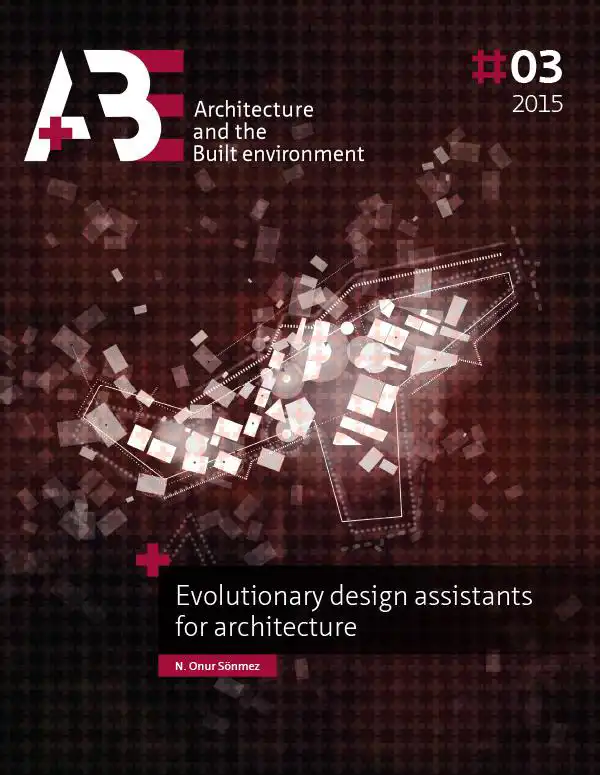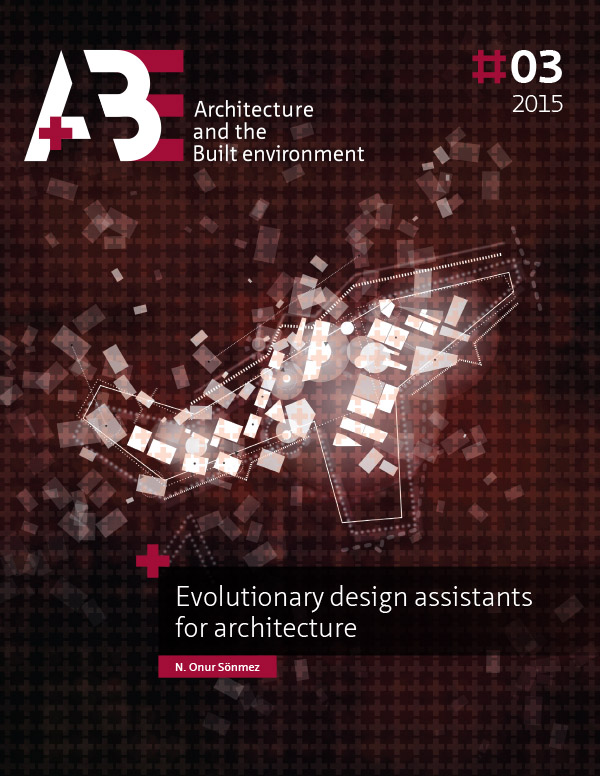- Engels
- Study
- nature & science
- EVOLUTIONARY DESIGN ASSISTANTS FOR ARCHITECTURE
SONMEZ, N. ONUR
EVOLUTIONARY DESIGN ASSISTANTS FOR ARCHITECTURE
39,95incl BTW
Vertrouwd sinds 1927
Persoonlijke aandacht en advies
Vanaf 17,50 gratis verzenden NL & BE
Meer dan 150.000 artikelen online
Omschrijving EVOLUTIONARY DESIGN ASSISTANTS FOR ARCHITECTURE
In its parallel pursuit of an increased competitivity for design offices and more pleasurable and easier workflows for designers, artificial design intelligence is a technical, intellectual, and political challenge. While human-machine cooperation ha
s become commonplace through Computer Aided Design (CAD) tools, a more improved collaboration and better support appear possible only through an endeavor into a kind of artificial design intelligence, which is more sensitive to the human perception o
f affairs.
Considered as part of the broader Computational Design studies, the research program of this quest can be called Artificial / Autonomous / Automated Design (AD). The current available level of Artificial Intelligence (AI) for desi
gn is limited and a viable aim for current AD would be to develop design assistants that are capable of producing drafts for various design tasks. Thus, the overall aim of this thesis is the development of approaches, techniques, and tools towards ar
tificial design assistants that offer a capability for generating drafts for sub-tasks within design processes. The main technology explored for this aim is Evolutionary Computation (EC), and the target design domain is architecture. The two connecte
d research questions of the study concern, first, the investigation of the ways to develop an architectural design assistant, and secondly, the utilization of EC for the development of such assistants.
While developing approaches, techniques
, and computational tools for such an assistant, the study also carries out a broad theoretical investigation into the main problems, challenges, and requirements towards such assistants on a rather overall level. Therefore, the research is shaped as
a parallel investigation of three main threads interwoven along several levels, moving from a more general level to specific applications. The three research threads comprise, first, theoretical discussions and speculations with regard to both exist
ing literature and the proposals and applications of the thesis; secondly, proposals for descriptive and prescriptive models, mappings, summary illustrations, task structures, decomposition schemes, and integratory frameworks; and finally, experiment
al applications of these proposals. This tripartite progression allows an evaluation of each proposal both conceptually and practically; thereby, enabling a progressive improvement of the understanding regarding the research question, while producing
concrete outputs on the way. Besides theoretical and interpretative examinations, the thesis investigates its subject through a set of practical and speculative proposals, which function as both research instruments and the outputs of the study.
s become commonplace through Computer Aided Design (CAD) tools, a more improved collaboration and better support appear possible only through an endeavor into a kind of artificial design intelligence, which is more sensitive to the human perception o
f affairs.
Considered as part of the broader Computational Design studies, the research program of this quest can be called Artificial / Autonomous / Automated Design (AD). The current available level of Artificial Intelligence (AI) for desi
gn is limited and a viable aim for current AD would be to develop design assistants that are capable of producing drafts for various design tasks. Thus, the overall aim of this thesis is the development of approaches, techniques, and tools towards ar
tificial design assistants that offer a capability for generating drafts for sub-tasks within design processes. The main technology explored for this aim is Evolutionary Computation (EC), and the target design domain is architecture. The two connecte
d research questions of the study concern, first, the investigation of the ways to develop an architectural design assistant, and secondly, the utilization of EC for the development of such assistants.
While developing approaches, techniques
, and computational tools for such an assistant, the study also carries out a broad theoretical investigation into the main problems, challenges, and requirements towards such assistants on a rather overall level. Therefore, the research is shaped as
a parallel investigation of three main threads interwoven along several levels, moving from a more general level to specific applications. The three research threads comprise, first, theoretical discussions and speculations with regard to both exist
ing literature and the proposals and applications of the thesis; secondly, proposals for descriptive and prescriptive models, mappings, summary illustrations, task structures, decomposition schemes, and integratory frameworks; and finally, experiment
al applications of these proposals. This tripartite progression allows an evaluation of each proposal both conceptually and practically; thereby, enabling a progressive improvement of the understanding regarding the research question, while producing
concrete outputs on the way. Besides theoretical and interpretative examinations, the thesis investigates its subject through a set of practical and speculative proposals, which function as both research instruments and the outputs of the study.
Specificaties
- MerkBK Books
- GroepEXACTE WETENSCHAP (910)
- Barcode9789461864659
- LeverstatusActief
Reviews
0.0/5.0
Gemiddelde uit 0 reviews
Meest behulpzame reviews
Nog geen reviews geschreven


